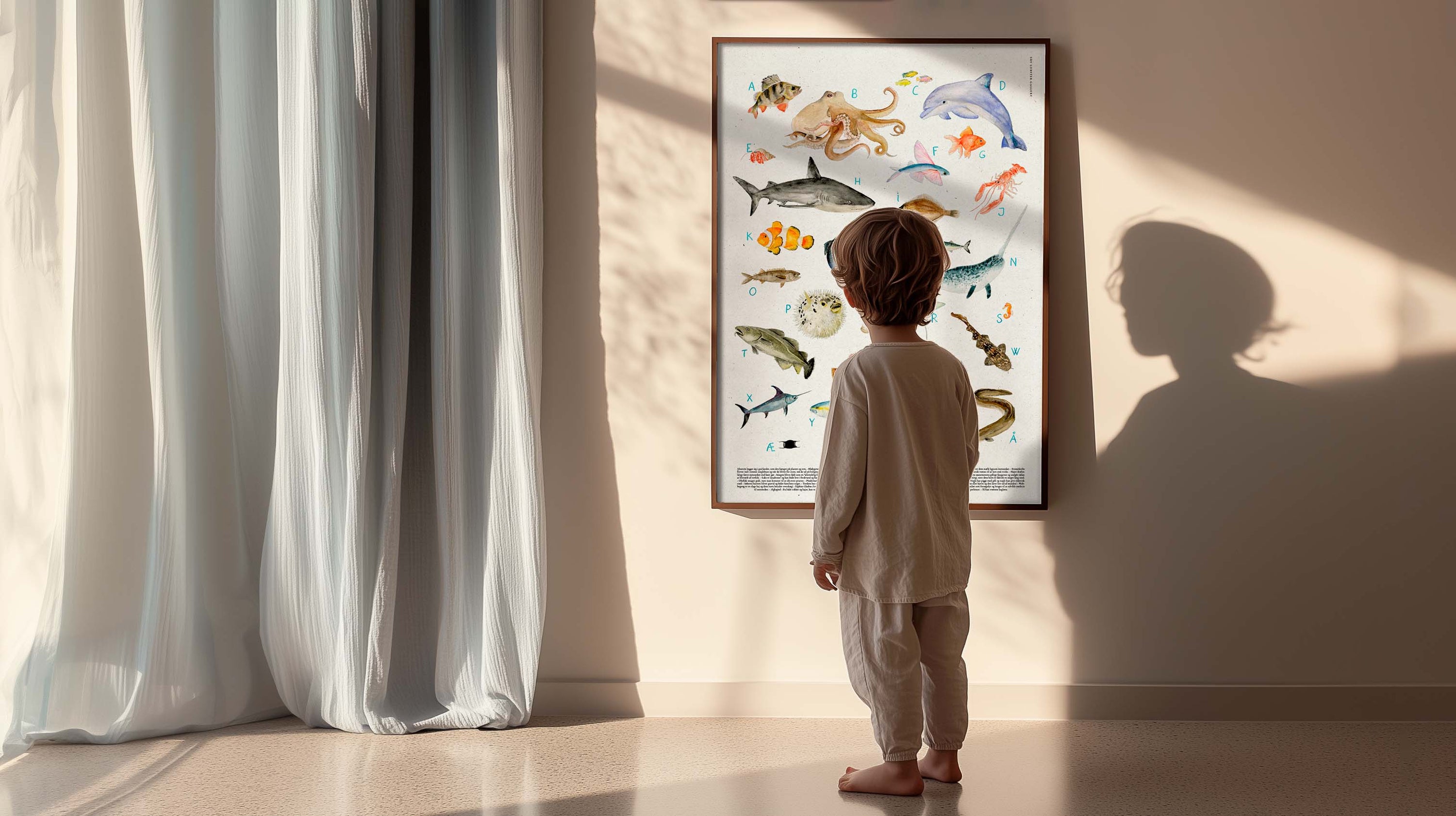
How to Choose the Perfect Poster for Your Child's Room
Decorating a child's room is not only about functionality, but also about creating a space where your child feels safe, happy and inspired. Posters are a great way to make the room more personal and exciting, while also contributing to learning and development. But how do you choose the right poster? Here are some important considerations.
See all our posters for kids here:
1. Age-Relevant: Meet Your Child at Their Level
It is important that the poster is appropriate for the child's age and stage of development.
- Toddlers (0-3 years): Choose posters with simple and contrasting patterns that stimulate visual development, or animal motifs that young children love to look at.
- Preschoolers (3-6 years): Here posters with recognizable characters, the alphabet or colorful scenes from fairy tales can be a good idea.
- Schoolchildren (6-12 years): Choose posters with more complex themes such as continents, constellations, or motivational quotes that can support their learning and interests.
- Teenagers (13+): Posters with youthful themes, artistic expressions or inspirational messages can help reflect their personality and self-development.
2. Aesthetics: Create a Comfortable and Inviting Space
Even if the poster is for your child, it should still fit the overall style of the room.
- Color Choice: Choose colors that match the room’s decor but still feel vibrant and fun. For example, soft pastels can create a calm atmosphere, while bolder colors like red and yellow can add energy.
- Design Style: A minimalist poster can bring calm to a room with lots of toy elements, while detailed and colorful posters can add life to a simpler space.
3. Entertainment: Capture the Child's Imagination
Posters can be a source of both joy and creative play.
- Fairy Tales and Fantasy: Posters with unicorns, spaceships, pirates or princesses can inspire play and storytelling.
- Interactive Posters: Consider posters that invite participation, such as a world map poster where you can mark places you want to visit.
- Characters and Universes: If your child has favorite characters from movies, books or games, posters with these can create joy and recognition.
4. Educational Content: Combine Fun and Knowledge
Posters with educational content can turn the room into a place of discovery and learning.
- Alphabet and Numbers: For younger children, posters with the alphabet, numbers or colors can help with early learning.
- World Maps and Nature: For school-age children, maps, animal species or solar system posters can be both fascinating and educational.
- Science Themes: Older children can benefit from posters with elements from the periodic table of chemistry, famous inventors or historical timelines.
5. Motiverende Budskaber: Styrk Dit Barns Personlige Udvikling
Plakater kan fungere som daglige påmindelser om positivitet og selvværd.
- Inspirerende Citater: En plakat med motiverende sætninger som "Du kan, hvis du vil" eller "Fejl er første skridt mod succes" kan booste barnets selvtillid.
- Værdier og Egenskaber: Plakater, der fremhæver værdier som venlighed, tålmodighed eller mod, kan opfordre barnet til at tænke positivt og handle derefter.
-
Visuel Repræsentation: Billeder, der viser børn i forskellige roller – astronaut, kunstner, atlet – kan inspirere barnet til at drømme stort.
-

6. Quality and Safety: Choose Materials Carefully
Children are curious, so it is important that the poster is safe and durable.
- Materials: Choose posters that are printed with non-toxic inks and on materials that can be wiped clean if fingerprints get on them.
- Hanging: Use safe hanging methods that do not involve small parts that could pose a risk to young children.
7. Make It Personal
A personalized poster can create a special sense of ownership and pride.
- Name Posters: A poster with your child's name or initials can be a sweet and personal touch.
- Own Drawings: Consider framing your child's own artwork as a unique and meaningful poster.
- Interests: If your child loves dinosaurs, music, or sports, choose posters that reflect their interests and passions.
Conclusion
Choosing the right poster for your child's room is about combining aesthetics, learning and entertainment. The poster should be age-appropriate, exciting and preferably have a motivating message that strengthens the child's development. Whether you choose colorful learning posters, inspiring quotes or fantastic characters, a well-chosen poster can create joy and turn your child's room into a personal and developing space.
So take your child for advice and find the poster that fits perfectly into their unique world!




